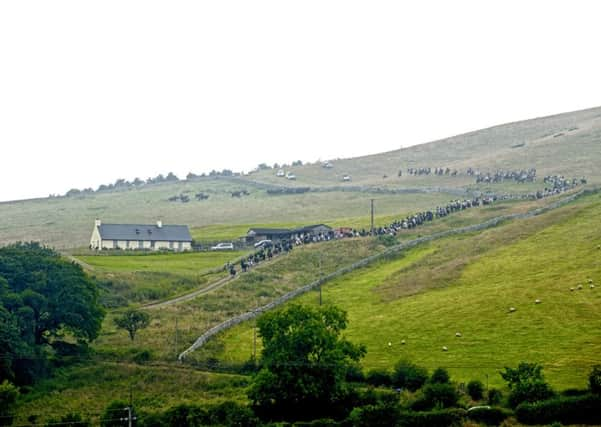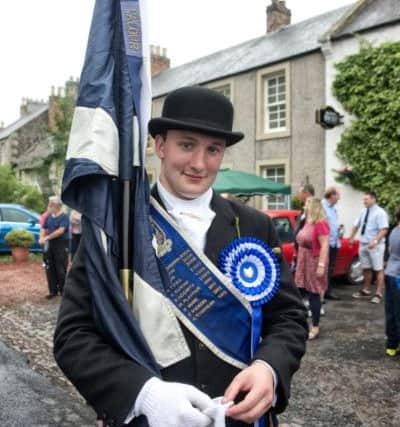100 Weeks of Scotland: Kelso Common Riding


Week 90
They come over the prows of distant hills, along ridges, through rivers and streams, in honour of those who came before when in more lawless times these common ridings were ridings of the marches. The horsemen would ride out and ensure that the common land belonging to the community was not being encroached upon by neighbouring towns or unwelcome squatters.
Driving through this soft and lovely landscape it is hard to believe that this was once a lawless and wild land. Home to the Reivers with their fearsome and deserved reputation it was also the setting for many a cross-border skirmish, or in the case of Flodden in 1513, full-scale pitched battles.


Advertisement
Hide AdAdvertisement
Hide AdNowadays though only the faint echo of those bloodier days remain. The common ridings hark back to this time when the need for security was crucial. It paid to band together and protect what you had as many a greedy hand would be ready to seize what was left unprotected.
Today, in Yetholm, just a mile or so north of the border it is a day for picnics on the village green in anticipation of the arrival of the Kelso Riding. The riders set out early in the day from Kelso and have travelled through other villages and across country before they appear over a ridge on Venchen Hill and begin the descent toward the Bowmont Water and into Kirk Yetholm and then the larger of the two villages, Town Yetholm.
The Kelso Laddie, with his Right Hand Man and Left Hand Man, then meet with the Yetholm Principals, the Bari Gadgi and the Bari Manushi. These gypsy names come from the two villages’ long and continuing association with the Romany community.
Legend has it that in 1695, during one of the French wars the life of a British officer, Captain David Bennet, was saved by his gypsy comdrade-in-arms. In gratitude he gifted some of his property in Yetholm to the gypsy community in perpetuity. In 1883 the last Queen of the Gypsies, Esther Faa Blythe died here.
As the last of the 228 riders that took part this year disappeared down the narrow road and out into the country beyond, the village soon returned to its quiet normality. The picnics were packed away under a sky of clouds that threatened at any moment to burst. The village hotel was still doing a healthy trade, and even though the riders had faded from view, it would continue to do so for some time yet.
• Alan McCredie began the ‘100 weeks of Scotland’ website in October last year, and it will conclude in Autumn 2014. McCredie’s goal is to chronicle two years of Scottish life in the run-up to the independence referendum.
Alan says ‘one hundred weeks...’ is intended to show all sides of the country over the next two years. On the site, he says: “Whatever the result of the vote Scotland will be a different country afterward. These images will show a snapshot of the country in the run up to the referendum.
“The photos will be of all aspects of Scottish culture - politics, art, social issues, sport and anything else that catches the eye.”
Advertisement
Hide AdAdvertisement
Hide AdFollow the project at www.100weeksofscotland.com. You can also follow Alan on Twitter @alanmccredie.